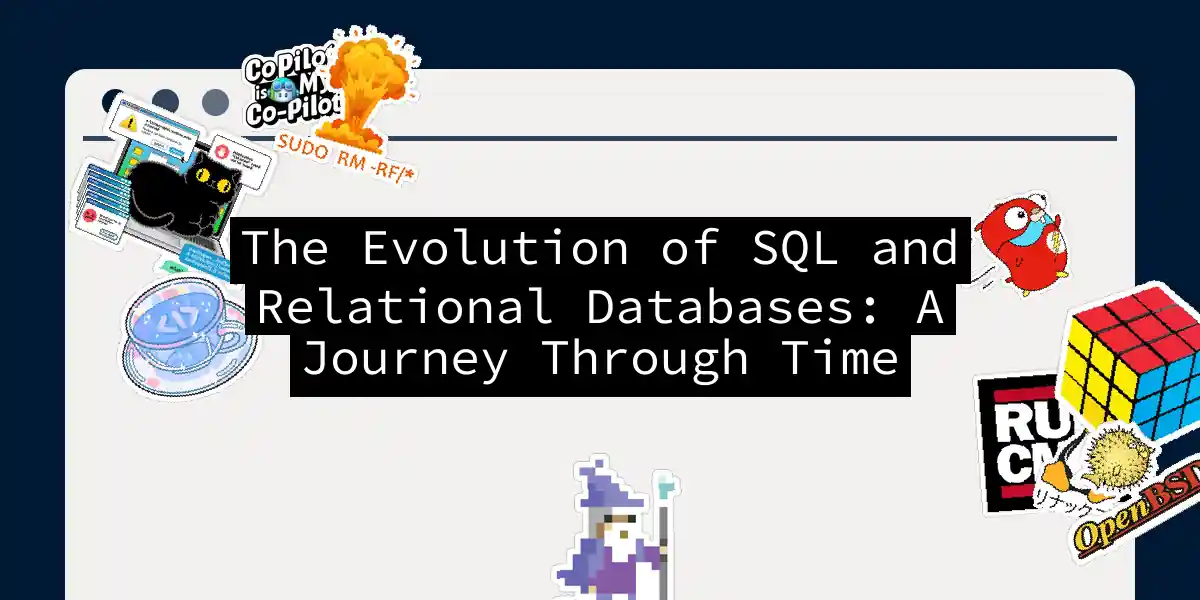The Dawn of Relational Databases
In the early 1970s, the world of database management was on the cusp of a revolution, thanks to the visionary work of Dr. E.F. Codd. Codd, an Oxford-educated mathematician working at IBM’s San Jose Research Lab, published a seminal paper titled “A Relational Model of Data for Large Shared Data Banks” in June 1970. This paper introduced the concept of relational databases, which would soon become the cornerstone of modern data management[1][2][5].
The Relational Model
Codd’s relational model was a game-changer. It proposed organizing data into tables with well-defined relationships, allowing users to access data without needing to know the physical storage details. This was a stark contrast to the hierarchical and network databases of the time, which were rigid and cumbersome. The relational model enabled users to create new tables from existing ones using simple queries, making data retrieval and manipulation significantly more efficient[1][2][5].
The Birth of SQL
As the relational model gained traction, the need for a standardized language to interact with these databases became apparent. Enter Structured English Query Language (SEQUEL), later renamed to Structured Query Language (SQL). Developed by IBM researchers Don Chamberlin and Raymond Boyce, SQL was designed to work with Codd’s relational model. The first implementation of SQL was part of the System R project at IBM San Jose, which laid the groundwork for future relational database management systems (RDBMS)[2][5].
From SEQUEL to SQL
The name change from SEQUEL to SQL was due to a trademark issue with a different company. Despite this, SQL retained its original purpose: to provide a simple, yet powerful way to manage and query relational databases. SQL’s syntax was designed to be intuitive, allowing users to define, manipulate, and retrieve data using declarative commands. This abstraction from the underlying physical storage made SQL a universally accepted language for RDBMS[1][2][4].
Standardization and Commercial Success
The 1980s marked a significant milestone for SQL. In 1986, the American National Standards Institute (ANSI) and the International Organization for Standardization (ISO) standardized SQL, ensuring consistency and compatibility across different platforms. This standardization propelled SQL to become the de facto language for relational databases, leading to widespread adoption and commercial success[2][3][4].
Oracle and DB2: Pioneers in RDBMS
Oracle, initially known as Relational Software, Inc., released the first commercially available RDBMS in 1977. IBM followed suit with DB2 in 1983, which became a flagship product for mainframes and later expanded to other platforms. These early implementations of RDBMS paved the way for the modern database industry[3][5].
Evolution and Adaptation
As technology advanced, SQL continued to evolve. PostgreSQL, developed in the 1980s at the University of California, Berkeley, introduced features like extensibility and support for complex data types, significantly enhancing SQL’s capabilities. Modern SQL has adapted to meet the needs of contemporary applications, incorporating new functionalities while maintaining its core structure and syntax[4].
NoSQL and the Modern Landscape
In the late 1990s and early 2000s, the term “NoSQL” emerged, initially coined by Carlo Strozzi in 1998. However, it wasn’t until 2009 that NoSQL gained prominence as a response to the limitations of traditional relational databases in handling large volumes of unstructured data. Today, both SQL and NoSQL databases coexist, each serving different needs in the ever-expanding data landscape[3].
Practical Applications and Learning SQL
Learning SQL today is rooted in its historical context but is also highly relevant to modern database management. Here’s a simple example to illustrate how SQL works:
-- Create a table
CREATE TABLE employees (
id INT PRIMARY KEY,
name VARCHAR(255),
department VARCHAR(255)
);
-- Insert data into the table
INSERT INTO employees (id, name, department)
VALUES (1, 'John Doe', 'Sales'),
(2, 'Jane Smith', 'Marketing'),
(3, 'Bob Johnson', 'Sales');
-- Retrieve data from the table
SELECT * FROM employees WHERE department = 'Sales';
This example demonstrates the basic CRUD (Create, Read, Update, Delete) operations in SQL.
Thinking in Sets
One of the key principles of effective SQL programming is thinking in terms of sets rather than individual records. Here’s an example using a join operation:
-- Create two tables
CREATE TABLE orders (
order_id INT PRIMARY KEY,
customer_id INT,
order_date DATE
);
CREATE TABLE customers (
customer_id INT PRIMARY KEY,
name VARCHAR(255),
email VARCHAR(255)
);
-- Insert data into the tables
INSERT INTO orders (order_id, customer_id, order_date)
VALUES (1, 1, '2024-01-01'),
(2, 2, '2024-01-15'),
(3, 1, '2024-02-01');
INSERT INTO customers (customer_id, name, email)
VALUES (1, 'John Doe', '[email protected]'),
(2, 'Jane Smith', '[email protected]');
-- Join the tables to retrieve customer information along with their orders
SELECT customers.name, orders.order_id, orders.order_date
FROM customers
JOIN orders ON customers.customer_id = orders.customer_id;
This example shows how SQL can efficiently handle set operations across multiple tables.
Diagram: Relational Database Model
Here is a simple diagram illustrating the relational database model using Mermaid syntax:
This diagram shows how different tables in a relational database can be linked through common keys.
Conclusion
The journey of SQL and relational databases is a testament to the power of innovation and standardization. From its humble beginnings in the 1970s to its current status as a cornerstone of modern data management, SQL has evolved to meet the changing needs of the digital world. Whether you are a seasoned developer or just starting out, understanding the history and principles of SQL can make you a more effective and efficient database professional. So, the next time you write a SQL query, remember the pioneers who made it all possible, and the ongoing evolution that keeps SQL relevant in today’s fast-paced technological landscape.
